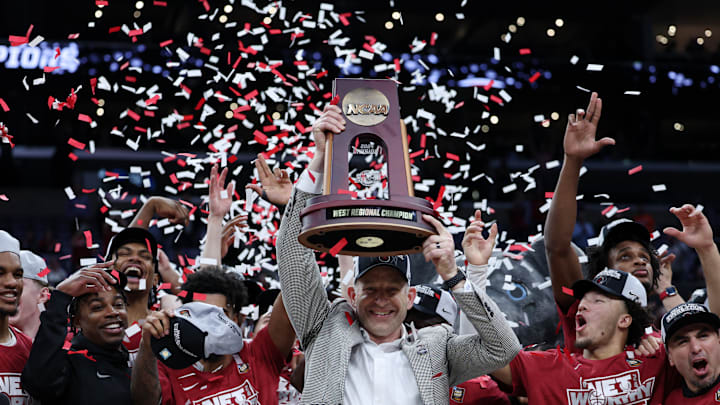The old saying goes: defense wins championships. Just ask Tony Bennett and his pack-line defense. But ever since Virginia's 2019 banner-raising season, the Cavaliers and its stout defense approach have yet to win a game in the NCAA Tournament. In other words, most agree that it’s time for a schematic change in Charlottesville to get the Cavaliers back to championship-level basketball. This poses a riveting question: is defense still the blueprint for postseason success?
According to KenPom.com, offensive efficiency is at its highest point in three decades. An uptick in pace has led to this evident change on the offensive end of the floor. According to CJ Moore, Staff Writer for The Athletic, college basketball teams scored 106.4 points per 100 possessions last season before the 2024 NCAA Tournament. That number was 104.8 the year before. As teams have gravitated toward emphasizing positionless, fast-paced basketball, the window is closing on teams that hang their hats solely on defense.
For example, 2019 runner-up Texas Tech’s tenacious, no-middle defense was infamous because it forced its opponents to drive baseline, cutting passing lanes and allowing a high volume of charges taken. The no-middle defense was so popular, especially in the Big 12, that Baylor adopted it.
However, over the past two seasons, Baylor’s KenPom adjusted defensive efficiency has plummeted, averaging an overall defensive efficiency of 101 -- a steep decline from its 2021 national championship team (91.1). From watching Baylor over the past two seasons, it’s evident that the Bears have ditched the no-middle defense in favor of a revamped, highly efficient offense.
Why is that so? A new charge rule implemented last season may be the culprit for that.
The new charge rule has increased block calls and decreased charge calls, limiting the amount of turnovers committed by a team. This, of course, leads to an increase -- and emphasis -- on scoring the basketball. And that has shown when it matters most: March.
Last season, many were quick to write of Alabama because of its lack of identity on defense. The Crimson Tide, who rode its juggernaut of an offense to its first-ever Final Four, is not the first example of a highly potent offensive team and a mediocre defensive group that shot its way to a deep run in the NCAA Tournament.
Five-seed Miami (FL), who made the Final Four in 2023, had an average KenPom defensive efficiency of just the 99th-best in the country that season. Its offense was top-six in the country.
Miami (FL) and Alabama aren’t just the two outliers, either. The average KenPom adjusted offensive efficiency rank for all Final Four teams post-COVID is 12.5. The four years before COVID-19? That number was nearly 22. Conversely, the average defensive efficiency rank for all Final Four teams post-COVID is about 33. The four years before COVID-19? A hair below 14.
This isn’t to illustrate that the focus on defense is dead. Defense is, and will always, be an integral part of college basketball. After all, the reigning back-to-back champs were a top-ten defensive team in the country over the past two seasons.
However, this evident shift in the collegiate landscape illustrates that teams must be able to put the ball in the basket at an efficient clip if they want to win six games in three weekends. It’s about staying ahead of the curve, says Wisconsin head coach Greg Gard, whose offense oversaw an extensive boost last season. According to BartTorvik.com, the Badgers had a top-20 offense last season. The year before that, the Badgers were only the 131st-best offensive team out of the 363 teams in Division I. They missed the NCAA Tournament that season.
It’s about adapting. It’s about building and shaping a roster that fits within the ever-changing landscape of collegiate athletics, both on and off the court. Look at Illinois, who took its veteran-laden, transfer-heavy roster to its first second-weekend appearance since 2005, capping off a 29-win, Big Ten Tournament title season with college basketball’s most efficient offenses.
Focusing solely on defense doesn’t win championships anymore. Focusing only on offense may not be either -- the jury is still out on that. Kentucky, upset by 14-seed Oakland last March, was among NCAA basketball’s highest-scoring teams last season. Perhaps the high-upside Wildcats were too young?
Striking the intricate balance between offense and defense may be the blueprint for postseason success. Of course, countless other variables account for postseason success in a single-elimination tournament, however, the trend in college basketball is clear: an offensive-centric approach has shifted the blueprint for NCAA Tournament success.
